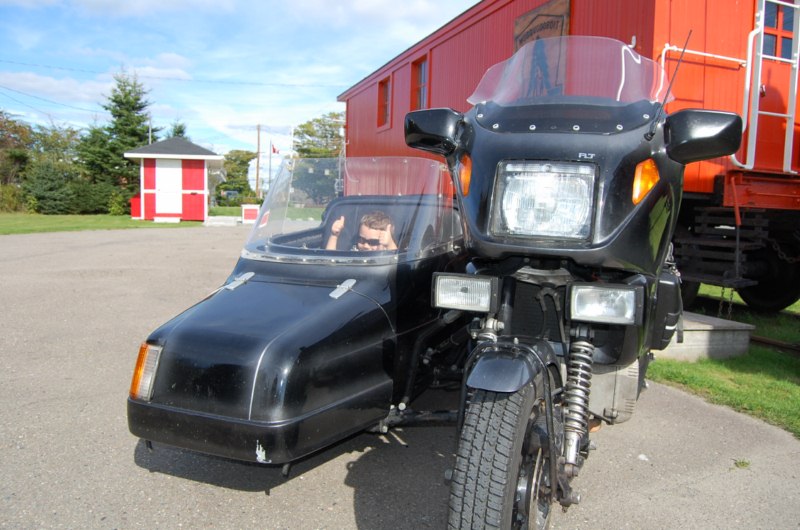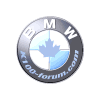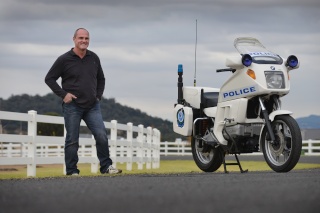It seems the Bosch road lamps were a dealer item. Many German-made cars of the era had Bosch fog lamps (e.g. Mercedes, Porsche, BMW), heck I even had a set of dealer installed Bosch fog lamps on my '87 Nissan Pulsar. So, it's not surprising that Bosch prepared a set of drive lights for the K-series (shown here on the K75), but judging by the lack of response on this form it appears they're a scarce item.
Looking at the brackets (below) they appear to be made-up of three pieces;
1) Lamp Arm
2) Shoulder
3) Tube clamp

As shown here, the arm is braised to the shoulder, while the tube clamp completes the installation.
Now, looking at the original installation (below right) it's clear the bracket mounts to the upper brace of the triple tree. In addition, bolt hole a) also lines-up to mounting point on the upper brace, this is what keeps the bracket aligned and properly orientated.

Notice now that the bracket on the right has an additional clip b) braised just above the alignment hole. Looking at the triple tree itself (above left) it becomes clear that somewhere along the line the bracket was modified to fit the lower brace because the bolt hole b) is higher up on the brace.
I will post some drawings of the brackets in case the reader may desire to fabricate some of their own. Common sheet metal could easily be pounded into a shoulder to fit the brace, while a tube clamp is easy to make. The only bit that needs some detailed attention is the lamp arm itself.


 Retrofit RT w/K100 fork-mounted lights Mon Apr 08, 2013 7:38 am
Retrofit RT w/K100 fork-mounted lights Mon Apr 08, 2013 7:38 am


















 1986 k75, 1985 K100rt,
1986 k75, 1985 K100rt, 









